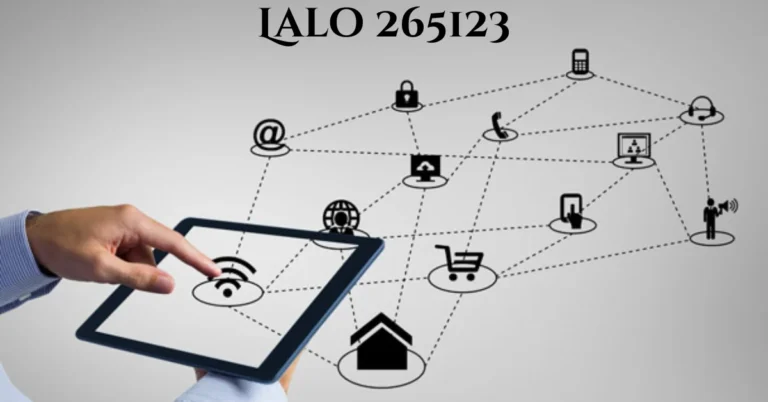Regulatory Challenges and Solutions for Medical Device Organizations
The medical device industry is one of the most tightly regulated sectors in the world. This is primarily due to the potential risks associated with using medical devices, which can directly impact patient safety. Companies must adhere to a myriad of regulations to bring a product from concept to market.
Regulatory challenges can slow down the development process, add significant costs, and require continuous updates to maintain compliance. Without a clear understanding of these requirements, medical device companies risk facing costly penalties and product recalls.
Understanding these challenges is the first step towards finding effective solutions. By recognizing the key regulatory hurdles, companies can better prepare and strategize to meet these demands.
Overview of Key Regulatory Bodies and Their Role in Device Approval
Navigating medical device regulations starts with understanding the key regulatory bodies involved. Each region has its own set of authorities responsible for device approval, with varying requirements and standards.
The FDA
In the United States, the Food and Drug Administration (FDA) plays a pivotal role. They have stringent guidelines and processes that must be followed for a device to be cleared or approved. From premarket notifications to postmarket surveillance, the FDA ensures that medical devices are safe and effective for public use.
The EMA
Across the Atlantic, the European Medicines Agency (EMA) oversees medical device regulations in the European Union. The EMA focuses on ensuring that medical devices meet the necessary safety and performance standards before they can be marketed in the EU.
Other Global Bodies
Other regions also have their own regulatory bodies, such as Health Canada and the Therapeutic Goods Administration (TGA) in Australia. Each regulatory body has its own unique set of rules and procedures, making global compliance a complex task.
Common Regulatory Hurdles: Quality Control, Risk Management, and Compliance
Medical device companies often encounter several common regulatory hurdles. These obstacles can delay product launches and increase costs, making it critical for companies to address them effectively.
Quality Control
Ensuring the quality of medical devices is paramount. Regulatory bodies require rigorous testing and validation to confirm that devices perform as intended. Quality control processes must be robust and consistent, covering every aspect from design to manufacturing.
Risk Management
Risk management is another critical area. Companies must identify potential risks associated with their devices and implement measures to mitigate them. This involves conducting thorough risk assessments and maintaining comprehensive documentation to demonstrate compliance.
Compliance
Staying compliant with regulatory standards is a continuous process. Companies must keep abreast of changing regulations and update their processes accordingly. Non-compliance can lead to severe consequences, including fines, product recalls, and damage to the company’s reputation.
Emerging Technologies and Their Impact on Regulatory Frameworks
The rapid pace of technological advancements is transforming the medical device industry. However, these innovations also pose new regulatory challenges that companies must address.
AI and Machine Learning
Artificial intelligence (AI) and machine learning are revolutionizing medical diagnostics and treatment. However, integrating these technologies into medical devices requires careful consideration of regulatory requirements. Regulatory bodies are still adapting their frameworks to accommodate these advancements, necessitating close collaboration between companies and regulators.
Wearable Devices
Wearable medical devices have gained popularity for their ability to monitor health in real-time. These devices, however, must comply with stringent regulatory standards to ensure accuracy and reliability. Companies need to conduct rigorous testing and validation to meet these requirements.
Personalized Medicine
Personalized medicine, which tailors treatments to individual patients, is another emerging trend. This approach demands new regulatory considerations, as devices must be adaptable to a wide range of patient-specific variables. Ensuring compliance in this evolving landscape requires innovative strategies and a deep understanding of regulatory expectations.
Regulatory Solutions and Best Practices for Medical Device Companies
Addressing regulatory challenges necessitates a strategic approach. Implementing best practices can help medical device companies streamline their processes and achieve compliance more efficiently.
Comprehensive Training
Investing in comprehensive training programs, such as ISO 13485 training, ensures that employees are well-versed in regulatory requirements. This knowledge is crucial for maintaining quality control and minimizing risks. Regular training updates keep the team informed about the latest regulatory changes and best practices.
Robust Documentation
Maintaining thorough documentation is essential for demonstrating compliance. Companies should establish standardized processes for documenting every stage of the device lifecycle, from design and development to manufacturing and postmarket surveillance. Clear and organized records facilitate audits and inspections by regulatory bodies.
Collaboration with Regulators
Building strong relationships with regulatory authorities can provide valuable insights and guidance. Engaging in open communication with regulators helps companies stay informed about evolving requirements and gain clarity on complex issues. Collaborative efforts contribute to smoother approval processes and faster market access.
Future of Medical Device Regulation: Trends and Predictions
The regulatory landscape for medical devices is continuously evolving. Anticipating future trends can help companies stay ahead of the curve and adapt proactively.
Increased Focus on Cybersecurity
With the rise of connected medical devices, cybersecurity is becoming a top priority. Regulatory bodies are likely to introduce more stringent requirements to protect patient data and ensure the integrity of device software. Companies must invest in robust cybersecurity measures to meet these evolving standards.
Integration of Real-World Evidence
Regulators are increasingly recognizing the value of real-world evidence in assessing the safety and effectiveness of medical devices. Leveraging data collected from actual device usage can provide valuable insights and expedite regulatory approvals. Companies that harness real-world evidence effectively will have a competitive advantage.
Global Harmonization of Standards
Efforts to harmonize regulatory standards across different regions are gaining momentum. Initiatives like the International Medical Device Regulators Forum (IMDRF) aim to streamline the approval process and reduce regulatory burden. Companies should stay informed about these harmonization efforts to simplify global compliance.
Conclusion
Navigating the maze of medical device regulations is undoubtedly challenging, but it is essential for ensuring patient safety and achieving market success. By understanding the key regulatory bodies, addressing common hurdles, and implementing best practices, medical device companies can overcome these challenges and thrive in a competitive landscape.
Compliance is not a one-time achievement but an ongoing commitment to excellence. Staying updated on emerging technologies and future trends allows companies to adapt and innovate while maintaining regulatory compliance
Keep an eye for more news & updates on Verified Zine!





